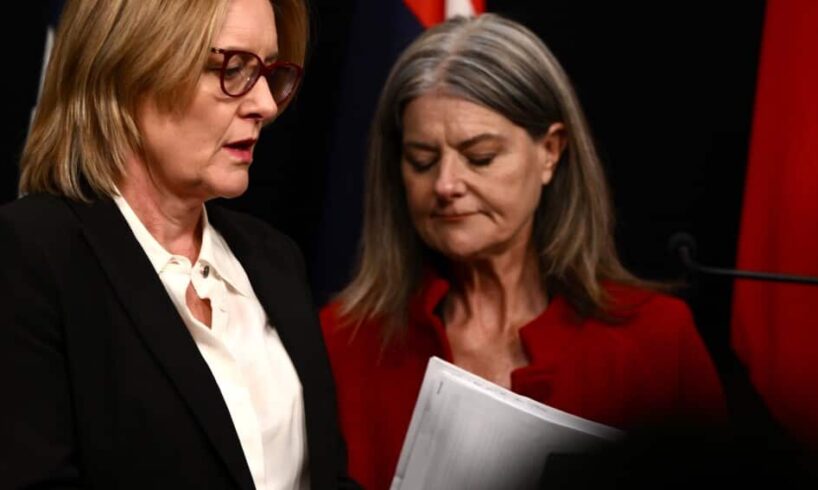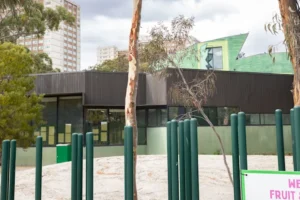
Experts warn the Victorian government’s “Adult Time for Violent Crime” plan for youth offenders could have a “catastrophic” impact on disadvantaged youth and question whether it would prevent crime in the community.Kathryn Daley, a former youth worker turned associate director of the Social Equity Research Centre at RMIT, said the proposed reforms risked long-term social harm “at the expense of pandering to a media storm in an election cycle”.”It’s going to have a catastrophic effect on some people’s lives,” she told SBS News.Unveiled on Wednesday by Premier Jacinta Allan and Attorney-General Sonya Kilkenny, the plan would allow alleged offenders as young as 14 to bypass the Children’s Court and face tougher sentencing for crimes such as home invasions, carjackings, burglaries, and machete attacks.
Seemingly based on a policy adopted by Queensland Premier David Crisafulli in 2024, the Victorian reforms could see some young offenders face life sentences and scrap the policy of prison being used “as a last resort”.
Frontline advocates and justice experts have condemned the move as politically driven rather than evidence-based, warning it could deepen disadvantage and set vulnerable teenagers on a path towards lifelong incarceration.The Victorian opposition said Allan couldn’t be trusted to deliver on lower crime rates.”Today’s announcement is the Premier chasing another headline with no plan to follow through and deliver,” Opposition leader Brad Battin said.
“Victoria is in a crime crisis because Jacinta Allan is weak on crime.”
Following Queensland’s example
Queensland’s “adult crime, adult time” policy — a key election pledge of Crisafulli before introducing it in late 2024 — has faced strong criticism from international human rights bodies.In October 2025, Queensland Police Service (QPS) data revealed almost 3,000 children had been charged under the new laws. The same data initially reported a 10.8 per cent drop in crime across nine key offences during the first nine months of 2025.
But Police Minister Dan Purdie admitted in state parliament a week later that the figures were wrong, and the actual reduction was 6.5 per cent. He attributed the mistake to human error, according to the Australian Broadcasting Corporation.
Mindy Sotiri, executive director of the Justice Reform Initiative, said that “tough on crime” policies often result in a short-term drop in crime, but the statistic eventually rebounds. “It’s kicking the can down the road,” she said. “In jurisdictions that have adopted ‘tough on crime’ policies, there may be some short-term drops as a consequence of people being locked up,” she said.However, when people are released from detention the likelihood of re-offending increases dramatically, Sotiri added.”If we’re not investing in support programs that we know reduce crime dramatically, if we’re not investing in early intervention and prevention, then we’ve got our policy settings really wrong.
“It’s about winning elections rather than actually looking at what the evidence is.”
Small groups driving youth crime spikes, experts say
Experts have questioned whether the rise in youth crime in Victoria justifies the government’s new punitive response.According to the Victorian Crime Statistics Agency, the number of criminal incidents recorded by Victoria Police in the year to 30 June 2025 was 483,583, compared to 408,930 the previous year, representing an increase of 18.3 per cent.Announcing the plan, Allan said: “There are too many victims, not enough consequences. That’s why we’re introducing Adult Times for Violent Crimes.”
She said the plan will be implemented in 2026.
However, Daley cautioned against taking the figures at face value, noting the police data does not necessarily reflect actual crime rates.”They’re not conviction rates, they’re police reporting rates. That’s not to say that [crimes] aren’t happening, but that’s one really important thing the community needs to understand,” she said.She said the rising youth crime incidents were being largely committed by a small group of repeat offenders. “And those young people have very complex psychosocial issues happening in their lives. Crime doesn’t come from nowhere; it comes from poverty, homelessness, and a lack of mental health services,” she said.Sotiri said while children should be held accountable for their actions, prisons do not keep the community safer.
“Prison does not work to address the drivers of why it is that kids are coming into contact with the justice system, and the experience of imprisonment makes it more likely someone will go on to re-offend,” she said.
‘Punishing trauma is not the answer’
The Children’s Court can impose a maximum jail sentence of three years. However, advocates argue that bypassing this court for certain violent offences amounts to “punishing trauma”.Under the proposed reforms, young people aged 14 to 17 who commit aggravated offences could be tried in the County Court, where they face the possibility of a life sentence.
The organisation warns that further reforms could have a “similarly devastating impact”.
Mindy Sotiri, executive director of the Justice Reform Initiative, said while children should be held accountable for their actions, prisons do not keep the community safer. Source: AAP / Con Chronis
VALS CEO, Nerita Wright, said: “Moving children to adult courts will only achieve one thing, further entrenchment of criminalisation.””Specialist youth courts are part of the solution and recognise the unique needs and rights of children at law,” she said.”Punishing trauma is not the answer.”
Daley agrees. “The reason why we have a separate youth justice system is to try and do as much as you can early on these young people’s lives,” she said.
What’s the solution?
Sotiri said there is little doubt about what works in reducing crime. Early intervention initiatives, bail support programs, and First Nations place-based approaches all have a significant impact on lowering crime rates. “These all exist in Australia, and they’ve been evaluated. There are examples of post-release programs for children coming out of prison that can reduce the likelihood of re-offending by close to 60 per cent,” she said.The problem, however, is the lack of funding. “Rather than these services, programs, and supports being funded adequately, we are pouring a lot of money into prisons, which we know don’t actually address the drivers of incarceration.”
Source





